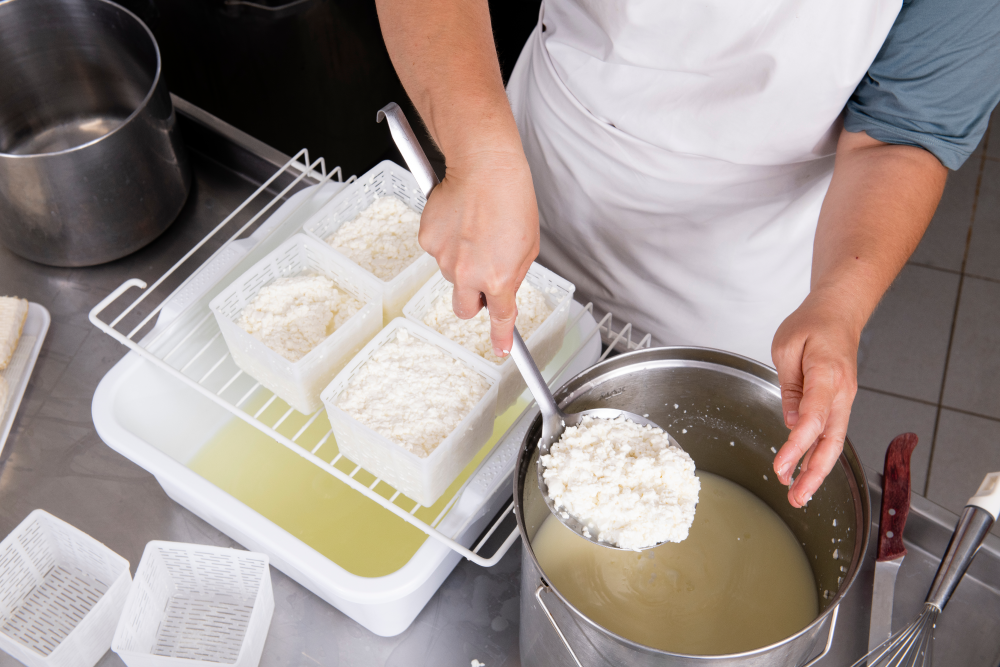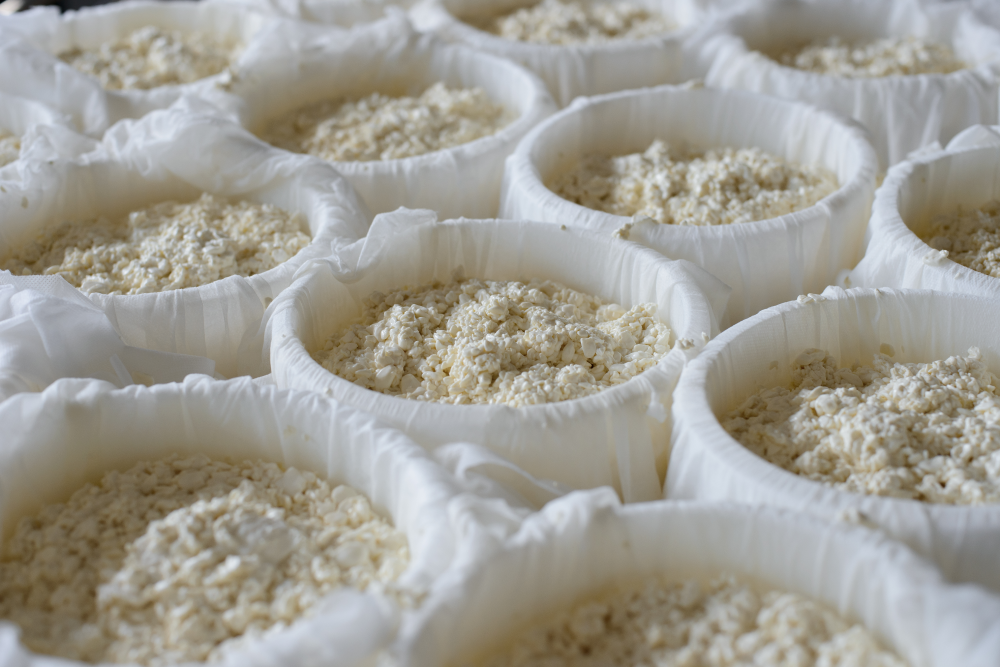Cheese is a wonderful thing. Recently linked to healthy aging, it dates back to at least the Ancient Egyptians, has been a symbol of socioeconomic status, and flavoring human lives for thousands of years, in which time we’ve come up with all sort of curious curdled creations, from rainbow colors to 3D sculptures.
Where we’ve been arguably less explorative is in our species selection when it comes to cheese production, which is mostly limited to cows, goats, sheep, and buffalo. Could we not, at least theoretically, branch out among the milk-producing mammals? What we’re really trying to ask is…
Can we make whale cheese?
We approached chemist Dr James Reynolds of Loughborough University with the big question, who explained that – in theory – it should be possible to produce cheese from any mammalian milk. The key obstacles we face largely center around ethics, safety, and practicality, as few would deny that lassoing a 150,000 kilogram (330,700 pound) cetacean for its milk is not moral, wise, or the foundation of a profitable cheese venture.
“However,” said Reynolds, “the internet has been speculating about different mammalian milk, so let’s fly a kite and see what it would be like in theory.”
What might whale cheese taste like?
With this much fat present in the sample, it would suggest that whale cheese would have a rich creamy texture.
Dr James Reynolds
“Whale milk – if you could obtain it by some means – would be able to produce cheese,” said Reynolds. “However, research conducted on the milk of blue and fin whales that was published in Nature back in 1953 showed that the fat and protein content of whale milk is much higher than it is in cows’ milk, with the fat content being approximately 40 percent and protein content being between 10-12 percent in whale milk versus 4 percent and 3.3 percent respectively in Jersey Dairy cow milk. The amount of lactose was observed to be lower.”

Cheese can be made in many ways, and the approach and ingredients you use can have a big impact on flavor.
Image credit: Maurizio Milanesio / Shutterstock.com
So, what does that mean for our crackers and whale cheese evening?
“With this much fat present in the sample, it would suggest that whale cheese would have a rich creamy texture.”
It’s possible it would carry a slightly fishy flavor, too. As the brave few to have tried boiled penguin egg can attest to, marine diets can have a big impact on flavor.
What influences the taste and texture of cheese?
If you’ve made it as far as milking your mammal of choice, there are several different ways in which you can turn it into cheese, and the approach you take – be that a certain milk source or bacterial culture – can have a big influence on the final product.
“According to a US study, milk consists of 87.7 percent water, 4.7 percent lactose sugar, 3.6 percent fats, 3.2 percent protein, and 0.7 percent minerals,” said Reynolds. “The lactose sugar and a group of milk proteins called caseins (which make up approximately 80 percent of the total milk protein) play important roles in the process of converting milk to cheese.”
For the majority of cheese, it begins with heating to 70°C (158°F) to pasteurize the milk and kill off pathogens (like the bird flu that recently infected some farm cats). Two important components are then added: a bacterial culture (called a starter culture), and an enzyme preparation called rennet which contains the chymosin enzyme, and is the reason why parmesan isn’t vegetarian.

Whale cheese would probably be creamy, rich, and possibly taste a bit fishy.
Image credit: Sergey Bogdanov / Shutterstock.com
That mixture gets fermented and as the bacteria grow and divide, the lactose sugar in the milk becomes their energy source. The metabolism of lactose lowers the pH until the mixture is acidic enough for the chymosin enzyme to become active, triggering the casein protein to coagulate and curdle the milk. This process forms a solid curd that can be skimmed, sliced up, and pressed into a mold for ripening.
“Cheese can then be ripened for various periods of time, and in general, the longer its ripened for the stronger the flavour (e.g. mature cheddar vs regular cheddar),” said Reynolds. “The cheese can also have fungi added at this stage which will grow as the cheese ripens, blue cheeses like Roquefort and Stilton are inoculated with Penicillium roqueforti which forms the characteristic veins which give them their flavour.”
“Making a change to any of the ingredients, or how a step is performed, will cause the cheese produced to have different properties. The composition of the milk in terms of the amount of lactose, fat, and protein present will influence the taste and texture. The higher the fat content, the smoother and creamier the cheese will be,” Reynolds added.
Pule cheese, which is made from a blend of goat and Balkan donkey milk, […] is one of the world’s most expensive cheeses.
Dr James Reynolds
“Likewise, using a different type of bacteria for the starter culture will change the flavour of the cheese produced. Cheddar, for example, is produced using Lactobacillus species which are fermented at around 30°C [86°F], while many Italian cheeses like Parmesan use thermophilic bacteria like Streptococcus thermophilus which are fermented at higher temperatures of greater than 40°C [104°F].”
Rare cheeses
Dairy cow milk is a common choice for cheese making, both for its comparative ease in terms of access, and the composition of proteins, lactose, and fats, that enables cheesemakers to create a range of products spanning different flavors and textures. There are, however, some rare and artisanal cheeses that may surprise you.
“Pule cheese, which is made from a blend of goat and Balkan donkey milk, for example, is one of the world’s most expensive cheeses,” explained Reynolds. “[And] the holes in Swiss cheese are formed by carbon dioxide gas bubbles generated by the Propionibacterium freudenreichii bacteria used as a starter culture in making Emmental cheese.”
And if none of that takes your fancy, there’s always the stomach-churning casu martzu.
Source Link: If Cheese Requires Mammalian Milk, Can We Make Whale Cheese?